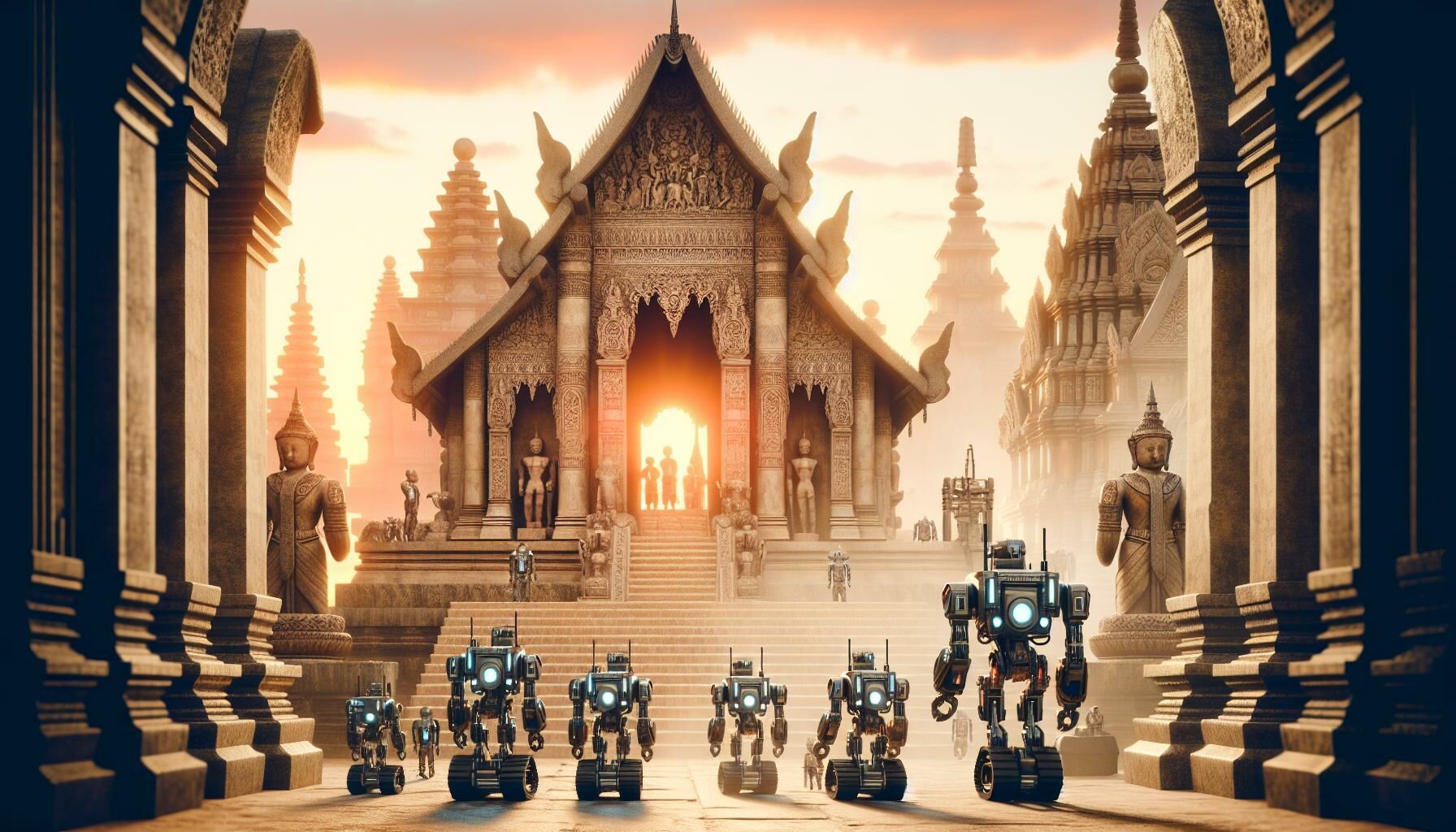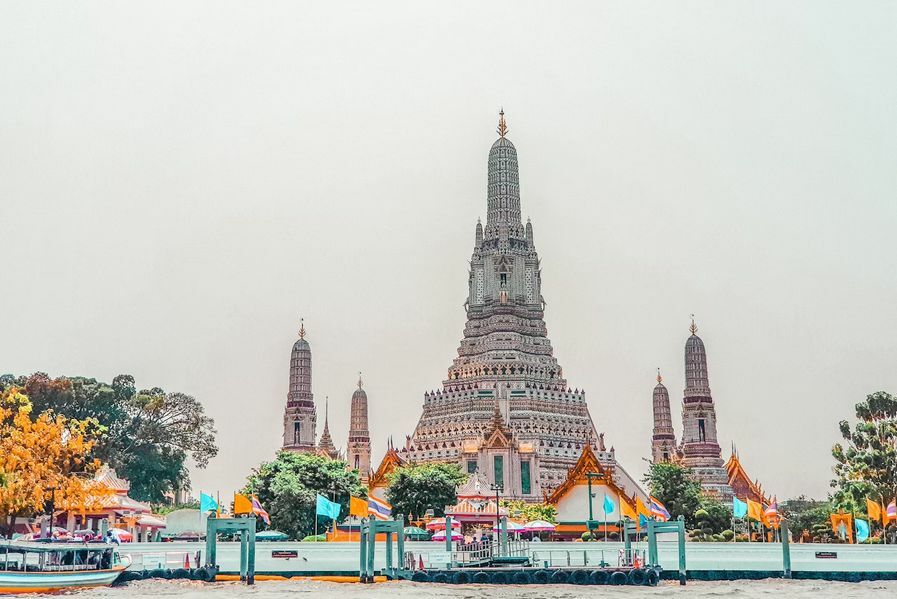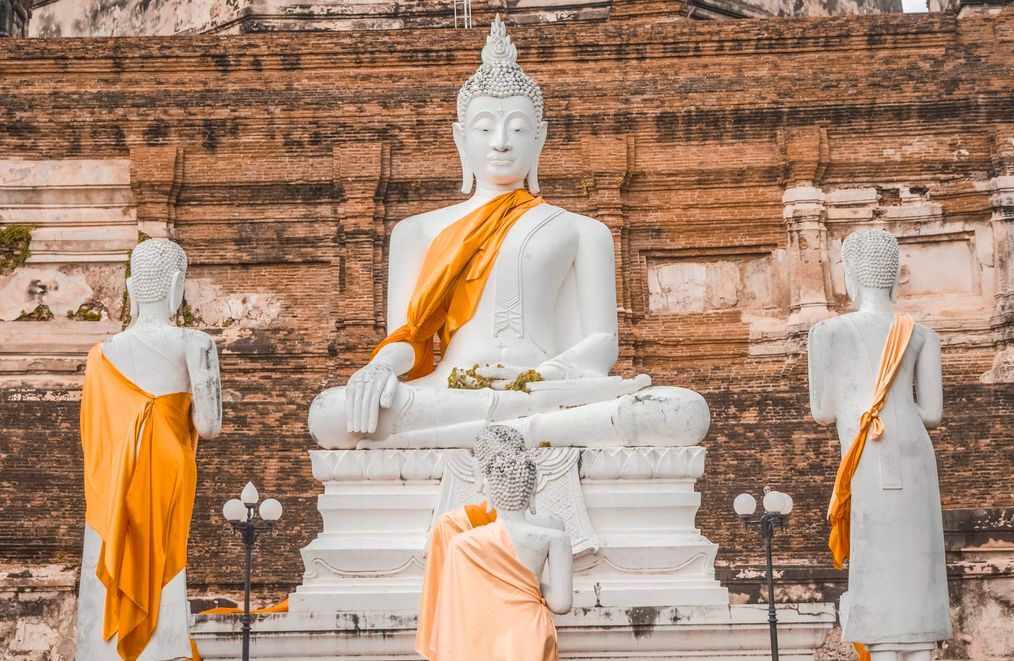The next era of temples and robotics

In the heart of Thailand, where tradition meets innovation, a remarkable transformation is unfolding within its sacred temples. For centuries, these temples have been bastions of spiritual guidance and cultural heritage, drawing visitors from around the globe to experience their serene beauty and intricate rituals. However, in a bold move towards the future, some of these ancient sanctuaries are now embracing the cutting-edge technology of robotics.
The traditional essence of Thai temples
Emphasising the spiritual and community roles of temples
Thai temples, or ‘wats’, stand at the core of Thailand’s social and spiritual fabric, serving as centres of both worship and community life. These sacred spaces embody the nation’s rich cultural heritage, integrating Buddhist teachings with the daily lives of the Thai people. Beyond their role as places for religious practices, temples act as hubs for education, social gatherings, and welfare, contributing significantly to community cohesion and support. The spiritual ambience of these temples, enriched by centuries of tradition, offers a tranquil retreat for both locals and visitors seeking solace and reflection.

A revolutionary blend: robotics in Thai temples
The concept of robotics in temples as a groundbreaking development
The inclusion of robotics within Thai temples marks a notable shift in how religious and cultural traditions engage with modern technology. This integration serves multiple purposes, from enhancing the worship experience to preserving intricate art forms specific to each temple. Robotics, an emerging facet in these sacred spaces, exemplifies a blend of innovation and reverence that underscores Thailand’s forward-thinking approach to cultural preservation. Temples use robots for tasks ranging from providing information to worshippers and visitors to performing maintenance work that helps conserve the temples’ historical structures. This development not only showcases the temples’ openness to modernity but also their commitment to leveraging technology to support the dissemination of Buddhist teachings.
The initial reaction from the religious community and the general public
The response to the introduction of robotics in Thai temples can be mixed, reflecting a spectrum of opinions across society. On one side, there’s a sense of awe and curiosity from both locals and tourists, intrigued by the sight of a robotics temple in Thailand merging the old with the new. This fascination highlights a collective acknowledgement of the benefits robotics bring to temples and robotics, enhancing accessibility and understanding of Buddhism’s rich heritage. Conversely, there will be caution among some faithful and monks, concerned about maintaining the sanctity and traditional essence of their worship practices. Despite these possible varied reactions, the dialogue surrounding robots in temples encourages thoughtful consideration of balancing progress with tradition, fostering a respectful evolution of religious observance in Thailand.
Future of robotics in temples

Detail how these robots assist visitors, providing language support and historical information
In Thailand’s hallowed temples, robots are transforming the visitor experience. It will be a chance in one day that they bridge language barriers, offering translations to ensure messages and teachings resonate with an international audience. These robotic aides also enrich the visitor’s journey by narrating the history of the temples, articulating stories behind ancient relics, and elucidating Buddhist teachings. This technological intervention allows temples to extend their reach, ensuring the essence of their heritage is conveyed accurately and comprehensively.
Explore the roles of robots in temple upkeep, possibly including cleaning and preservation tasks
Temple maintenance has seen a remarkable shift with the inclusion of robotics. These machines might undertake tasks ranging from cleaning floors to preserving delicate artworks, ensuring the sacred spaces remain pristine for worshippers and visitors alike. In environments where precision and consistency are paramount, robots provide a solution that upholds the high standards of cleanliness and conservation demanded by these ancient sites. This utilisation of robotics in temples in Thailand underscores a commitment to safeguarding architectural and cultural legacies for future generations.
Discuss any robots involved in conducting or assisting with religious rituals.
Robotics in temples aren’t limited to just visitor assistance or site maintenance; they have a role in religious practices too. Some temples have introduced robots that assist in conducting or supporting rituals, bridging the gap between technology and spirituality. These robots might distribute offerings or even perform chantings, embodying a fusion of tradition and modernity. By integrating robotics into these sacred acts, temples are navigating a path that respects historical practices while embracing innovations that can enhance the spiritual experience. This pioneering approach to temples and robotics fosters a dialogue on the confluence of faith and the future, hinting at a new era in religious observance.
Analysing impacts
The adoption of robotics in Thailand’s temples represents a fascinating intersection of tradition and technology. It’s a testament to the country’s innovative spirit and respect for cultural heritage. By integrating robots into religious and maintenance activities, these sacred spaces are setting a precedent for how technology can enhance cultural practices. The positive reception from visitors indicates a broad acceptance of this modern approach to tradition. As technology continues to evolve, it’ll be intriguing to see how other societal sectors might draw inspiration from Thailand’s temples. This blend of the ancient with the cutting-edge not only enriches visitor experiences but also opens new avenues for preserving and sharing cultural heritage in a rapidly changing world.
Latest Thailand News
Follow The Thaiger on Google News:


























